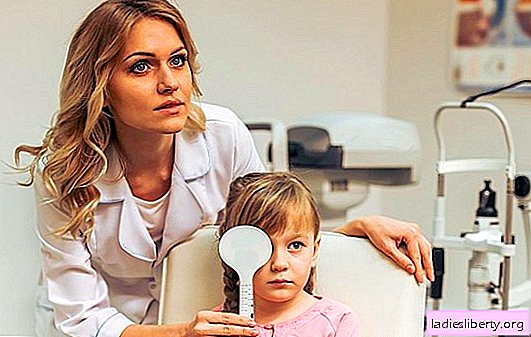
Outdoor games protect children from myopia, according to the German Society of Endocrinology and the German Ophthalmic Society. Bright light reduces the release of dopamine in the retina and the growth of the eyeball. Numerous research results suggest that outdoor life counteracts the development of myopia.
How common is myopia?
The World Health Organization (WHO) has announced that myopia is a global health problem. Now in the USA and the EU there are 2 times more people with myopia than half a century ago.
With regard to causal relationships, twin studies have shown that a hereditary predisposition contributes to the disease. However, genes are not responsible for the fact that this visual impairment is more common.
Various environmental factors are responsible for the disorder. A study in Alaska confirmed that among living Eskimos in 1969, only 2 out of about 130 people were shortsighted.
A glance at the People's Republic of China shows even more clearly that myopia has indeed reached epidemic proportions. If about half a century ago, only up to 20% of Chinese were myopic, now it is up to 90% of children and young people. The Chinese research team has now reached the bottom of the phenomenon.
In China and South Korea, the smallest are often motivated to study for hours day after day. They usually spend much less time outdoors than European children. AT
In Singapore, parents give their children an average of 3 hours of outdoor games per week. The fact that children are rarely allowed to walk here is caused by alarming air pollution in metropolitan areas.
According to information provided by two specialized societies, approximately one in three Russian citizens is shortsighted. Myopia is becoming epidemic in many countries in Europe, North and South America.
Several studies have shown that ametropia can be relatively easily counteracted. For example, children are less likely to develop myopia, the more often and longer they spend outdoors.
Why does myopia occur?
In the past, it was widely believed that reading in poorly lit areas increases the risk of myopia. However, today the scientific community sees the problem mainly in insufficient daylight.
Why lack of daylight can lead to myopia is still hotly debated. A study at Tübingen University showed that the retina produces less dopamine. The hormone is involved in the development of the eyeball.
The relationship between educational attainment and myopia
With myopia, according to the expert, the eyeball is usually too long. Therefore, nearsighted people will perceive distant objects only blurry. Why some people have myopia, while others do not, has not yet been fully elucidated.
A 1969 study conducted on Inuit in northern Alaska showed that lifestyle also obviously plays an important role.
Many studies, including recently published from Mainz, have revealed a link between myopia and education.
Learning includes more reading and more indoor living. Most epidemiological studies have found a connection between myopia and "close work." However, it is still difficult to understand what exactly causes myopia when reading.
Sufficient daylight protects against myopia
Daylight plays an important role in the development of myopia, as scientists show. Numerous studies indicate that children on the street counteracts myopia.
In enclosed spaces no more than 500 lux will be reached, but on sunny days outside, even in the shade, about 10,000 lux will be reached. This undoubtedly has a significant effect on vision.
Myopia in children can probably be prevented if exposed to at least 10,000 lux per day for about 3 hours. Therefore, experts recommend: "children should play as much as possible on the street."











